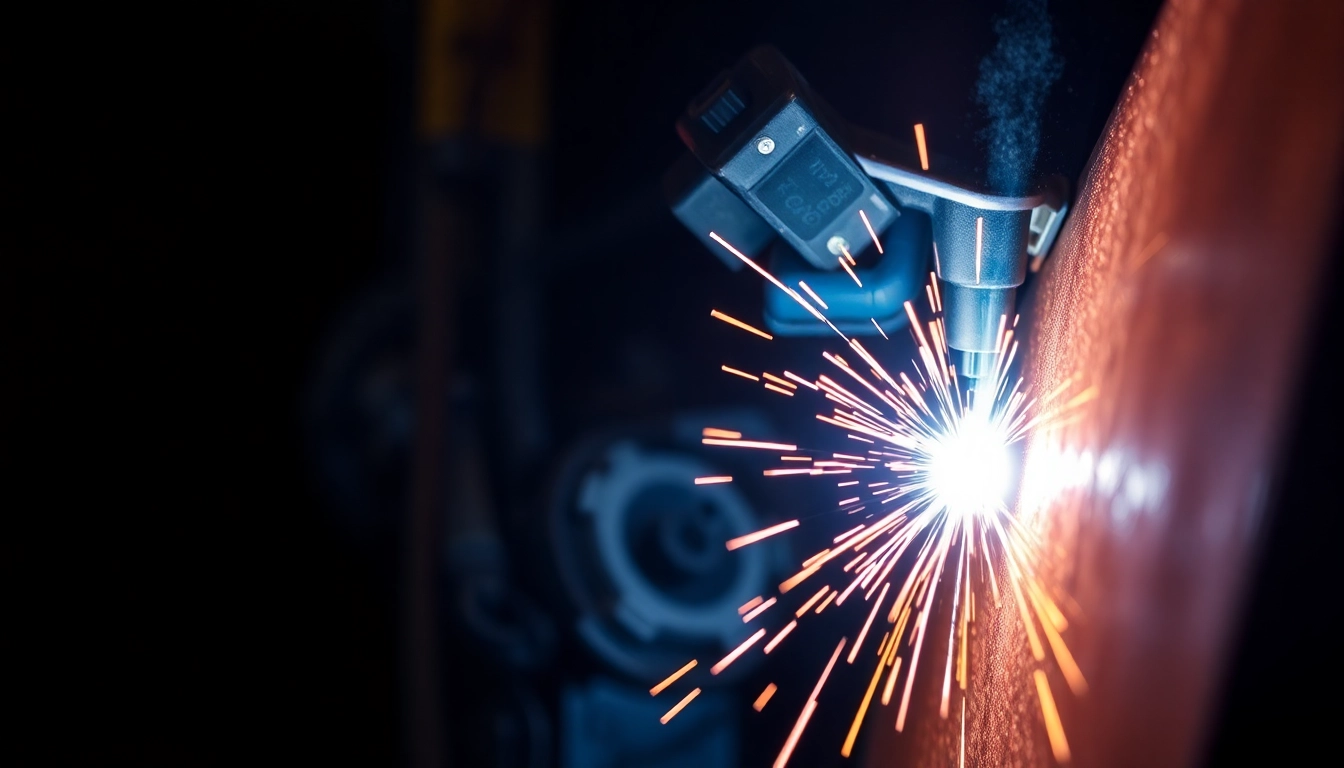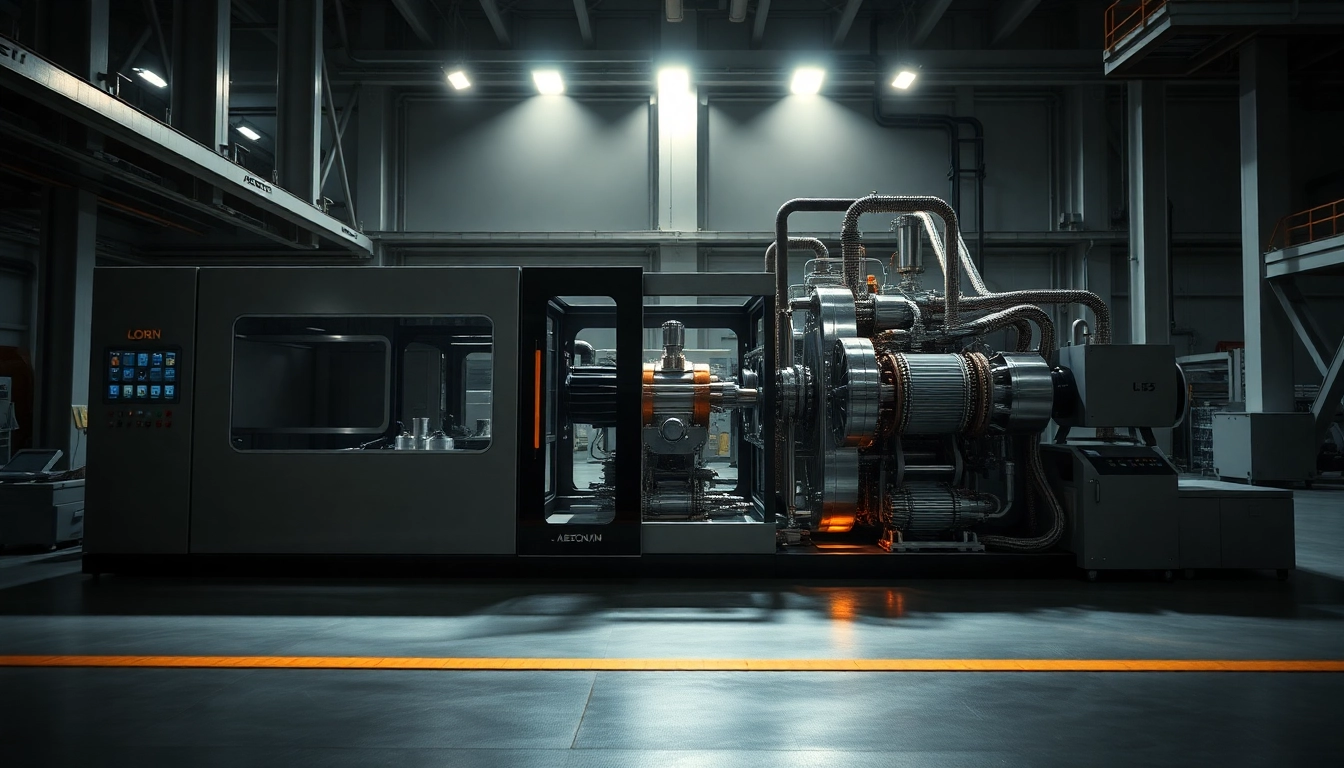Understanding AC DC TIG Welders
What is an AC DC TIG Welder?
An AC DC TIG welder is a versatile machine, integral to modern fabrication and repair processes. The term “TIG” refers to Tungsten Inert Gas welding, a process that uses a non-consumable tungsten electrode to produce the weld. What distinguishes AC DC TIG welders from other types is their ability to operate on both alternating current (AC) and direct current (DC). This functionality allows welders to work with a broader range of metals, making these machines essential for industries such as aviation, automotive, and heavy machinery. Whether you’re welding aluminum, stainless steel, or mild steel, an ac dc tig welder provides the flexibility needed to achieve high-quality welds.
How AC DC TIG Welding Works
The essence of TIG welding revolves around the use of a focused arc produced between the tungsten electrode and the workpiece. When dealing with metals like aluminum, AC is preferred because it effectively cleans the surface of the oxide layer, making it easier to achieve a strong weld. The alternating current rapidly switches polarity, allowing for a cleaning action during the positive cycle and actual welding during the negative cycle. On the other hand, DC welding is often used for ferrous metals, offering a stable and concentrated arc that provides deeper penetration for thicker materials.
Advantages of Using AC DC TIG Welders
Utilizing an AC DC TIG welder comes with numerous advantages:
- Versatility: The ability to switch between AC and DC allows welders to work with a variety of materials including aluminum, copper, and steel.
- Precision: TIG welding is known for its precision, producing neat and clean welds with minimal spatter.
- Control: Welders can control the heat and arc length, making it easier to weld thin materials without burn-through.
- Quality: The process creates strong, high-quality welds that can withstand high pressures and temperatures.
Choosing the Right AC DC TIG Welder
Key Features to Look For
When selecting an AC DC TIG welder, it’s essential to consider several key features:
- Amperage Range: A welder with a broad amperage range (typically between 10 to 250 amps) allows for versatility in how thick or thin materials you can weld.
- Duty Cycle: This is the amount of time a welder can operate before it needs to cool down. A higher duty cycle indicates the machine can handle prolonged use.
- Portability: Consider if you need a lightweight model for mobility or a more robust, stationary unit for heavy-duty work.
- Processor Type: More advanced digital processors can enhance control over the welding process, including advanced features like pulse control.
Top AC DC TIG Welder Brands
Several brands excel in producing reliable and high-quality AC DC TIG welders:
- Miller Electric: Renowned for their durable machines and excellent customer support. Models like the Dynasty 210 are particularly popular.
- Lincoln Electric: Offers machines with robust construction suited for industrial use. The Aspect 230 is a well-liked model.
- Everlast: Provides a range of budget-friendly options without sacrificing performance, making them ideal for both hobbyists and professionals.
- PrimeWeld: Known for their high performance and competitive pricing, they provide excellent choices for entry-level and seasoned welders alike.
Budget Considerations for Welders
The price range for AC DC TIG welders can vary widely based on features and performance capabilities. Entry-level machines might start around $500 to $1,000, while industrial models can exceed $3,000. It’s crucial to assess your specific needs and future projects before making a purchase. Investing in a quality welder that meets your demands can save you money in the long run.
Techniques for Effective AC DC TIG Welding
Best Practices for Beginners
For those new to TIG welding, mastering the basics is essential:
- Practice Setting the Right Amperage: Always consider the thickness of your material and adjust the welder accordingly. Thin materials require lower amperage to avoid burn-through.
- Stable Hand Control: Maintain a steady hand to produce even welds, ensuring that the torch remains at the correct angle with minimal movement.
- Choose the Right Filler Material: Depending on the material you’re welding, select an appropriate filler rod to achieve a strong bond.
- Keep a Consistent Speed: Moving too fast will produce weak welds, while too slow may cause warping. Aim for a consistent speed for a quality finish.
Advanced Welding Techniques
Once the basics are mastered, welders can experiment with advanced techniques:
- Pulsed TIG Welding: This technique helps to control heat input, reduce distortion, and prevent overheating of thin metals.
- Stainless Steel and Aluminum Welding: The use of DC for stainless steel and AC for aluminum ensures a clean weld with the appropriate penetration.
- Weaving Patterns: For wider welds, weaving or adding motion to the torch can help achieve desired bead width.
- Stacking Dimes: A common visual technique where the goal is to produce small, uniform welds resembling stacked dimes for aesthetic appeal.
Common Mistakes to Avoid
Throughout the learning process, many beginners make common errors that can affect the quality of their welds:
- Incorrect Electrode Positioning: Always keep the electrode close to the workpiece to obtain a concentrated arc.
- Neglecting Safety Gear: Personal protective equipment, including welding helmets and gloves, is crucial to protect against sparks and UV exposure.
- Inconsistent Heat Settings: Frequently changing the amperage during welding can produce weak points in the joint; maintain consistent settings for optimal results.
Maintenance of Your AC DC TIG Welder
Regular Cleaning Routines
To ensure the longevity and efficiency of your AC DC TIG welder, adopt a strict cleaning regime:
- Clean Electrical Connections: Regularly check and clean the torch and ground clamp to ensure optimal conductivity and performance.
- Inspect for Damage: Examine cables and hoses for wear and tear, replacing any damaged parts immediately.
- Keep the Cooling System Clear: Ensure that the cooling vents are free from dust and debris to prevent overheating during operation.
Troubleshooting Common Issues
As with any machinery, problems can arise. Here are some common issues and their remedies:
- Inconsistent Arc: This can result from poor connection or damaged cables; check connections first before replacing parts.
- Overheating: Ensure duty cycles aren’t exceeded and that the cooling system is operating efficiently.
- Poor Penetration: If welds are not penetrating properly, check the settings, travel speed, and filler material used.
Long-term Care for Optimal Performance
Regular upkeep can vastly improve the lifespan of your AC DC TIG welder:
- Annual Professional Servicing: Have a professional check the unit at least annually for internal wear and adjustments.
- Storage Conditions: Store the welder in a dry, dust-free environment to protect it from environmental factors.
- Use Manufacturer-Recommended Parts: Always use parts and consumables recommended by the manufacturer to avoid compatibility issues.
The Future of AC DC TIG Welding Technology
Emerging Innovations and Trends
The welding industry is continually evolving, and several trends are shaping the future of TIG welding:
- Smart Welders: Integration of IoT technology is enabling welders to monitor performance and receive alerts through mobile applications.
- Advanced Automation: Robotic TIG welding is becoming more common in manufacturing, improving consistency and efficiency.
- Eco-Friendly Practices: Innovations in equipment that reduce energy consumption and waste are becoming essential as industries push for sustainability.
The Role of Digital Technology
Digital technology is revolutionizing TIG welding processes:
- Data Analytics: Capturing data during welding processes facilitates real-time adjustments, increasing efficiency and effectiveness.
- Remote Control Features: New models allow for remote adjustments to settings, making it easier to adapt to changing conditions during welding.
- Simulated Training Tools: Digital tools and simulations are aiding in the training and development of new welders in less time and at a lower cost.
Predictions for the Welding Industry
As technology develops, several key trends can be anticipated in the welding industry:
- Increased Demand for High-Quality Welds: Industries will continue to prioritize precision and quality in welding, leading to faster adoption of advanced technologies.
- Training and Skill Development: With advances in technology, skill development programs will evolve to incorporate the latest techniques and equipment.
- A Growing Focus on Safety: Innovations in safety equipment and protocols will become increasingly important, responding to industry needs for worker protection.



